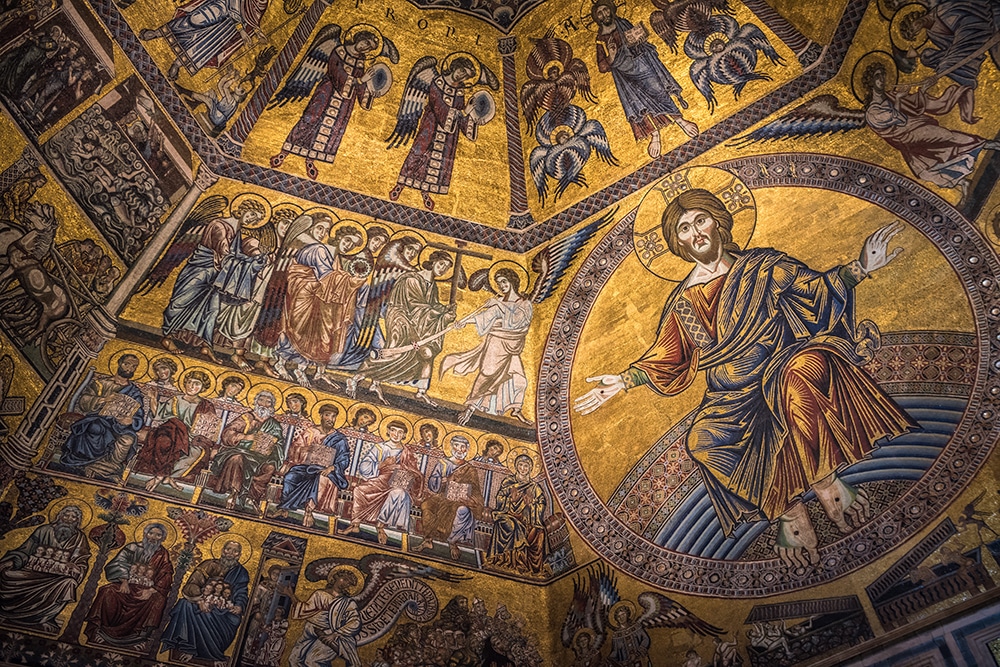
— Jeannine Aucoin, Concord, New Hampshire
Answer: Father Alban Butler (1710-73), the author and originator of “Butler’s Lives of the Saints,” gave the Church a wonderful, multivolume text on the lives of the saints. The essays of most saints are quite thorough and are cross-referenced with other historical and archival material.
That said, he was known for a writing style that wove his personal and pious reflections with historical data. This style of writing was not uncommon in the writing of that period of the 18th century. These flourishes, at times, contained a kind of exaggeration known as hyperbole. The text you cite is one such example: “In honoring the martyrs, we pronounce our own condemnation.” Such flourishes are common in the world of preaching. But in the preaching moment, the listener is assisted by the tone of the preacher’s voice and other such clues as hand gestures and facial expressions. For example, a preacher might say, “We have all gone mad!” But the listeners usually know he is exaggerating to make a point. If literally everyone had gone mad, who would exist to make the preacher’s point or to hear it with understanding? Written texts, however, are “tone deaf” and thus lack some of the signals that help show intentional exaggeration and other flourishes.
Hence, when Father Butler says that honoring the martyrs pronounces a condemnation upon us, he is surely exaggerating. In effect, he means that when we look at what the martyrs were willing to endure for the Faith, it is rather pathetic at how little many others are willing to endure. Even a hard pew, a failed air conditioner or a long sermon are deemed intolerable by some. So, in reality, he is confirming your point that we emulate the martyrs and try to live up to their splendid example, not being so easily frustrated about minor difficulties.
Some were critical of Father Butler’s style and willingness to include legendary material in his hagiography (study of the saints). Some in the later half of the 20th century wanted a more scientific approach that used only certain material and avoided rhetorical and pious commentary. For a brief time, his work fell out of favor. But it has largely returned in recent years to prominence and appreciation. It is a good resource as long as the literary style is accepted and there is a proper understanding of what is sure fact, what is less certain and what is simply his commentary.
The Transfiguration
Question: What was the purpose of the Transfiguration? Did Jesus need to be transformed? Did he do it for the apostles? Did he need to talk with Moses and Elijah before his passion? I don’t understand the meaning and purpose.
— Paul VanHoudt, Erie, Colorado
Answer: Jesus did not need the Transfiguration. As you rightly note, he did this for the apostles. The preface for the feast of the Transfiguration says, “For he revealed his glory in the presence of chosen witnesses … that the scandal of the Cross might be removed from the hearts of his disciples.” In that brief moment, the disciples Peter, James and John got a partial glimpse of the glory that Jesus has. He could not show them his full glory since they could not bear such brightness. But this glimpse of his glory was meant to strengthen them for the difficult days ahead and to help them know his true and lasting glory in those moments when all they would see were his bloody face and tortured body.
The presence of Moses and Elijah signal that the Old Testament Scriptures prophesied both Christ and his passion and that these prophecies are being fulfilled in Jesus. Moses represents the Law contained in the Pentateuch. Elijah represents the prophets. The ancient Exodus and Passover point to Christ’s exodus and passover. The prophets also spoke of the Messiah and what he would do. Here, too, Jesus did not “need” to talk with Moses and Elijah. He does this for our sake to show that his passion and death are in accordance with what the Old Testament set forth.
Msgr. Charles Pope is the pastor of Holy Comforter-St. Cyprian in Washington, D.C., and writes for the Archdiocese of Washington, D.C. at blog.adw.org. Send questions to msgrpope@osv.com.





